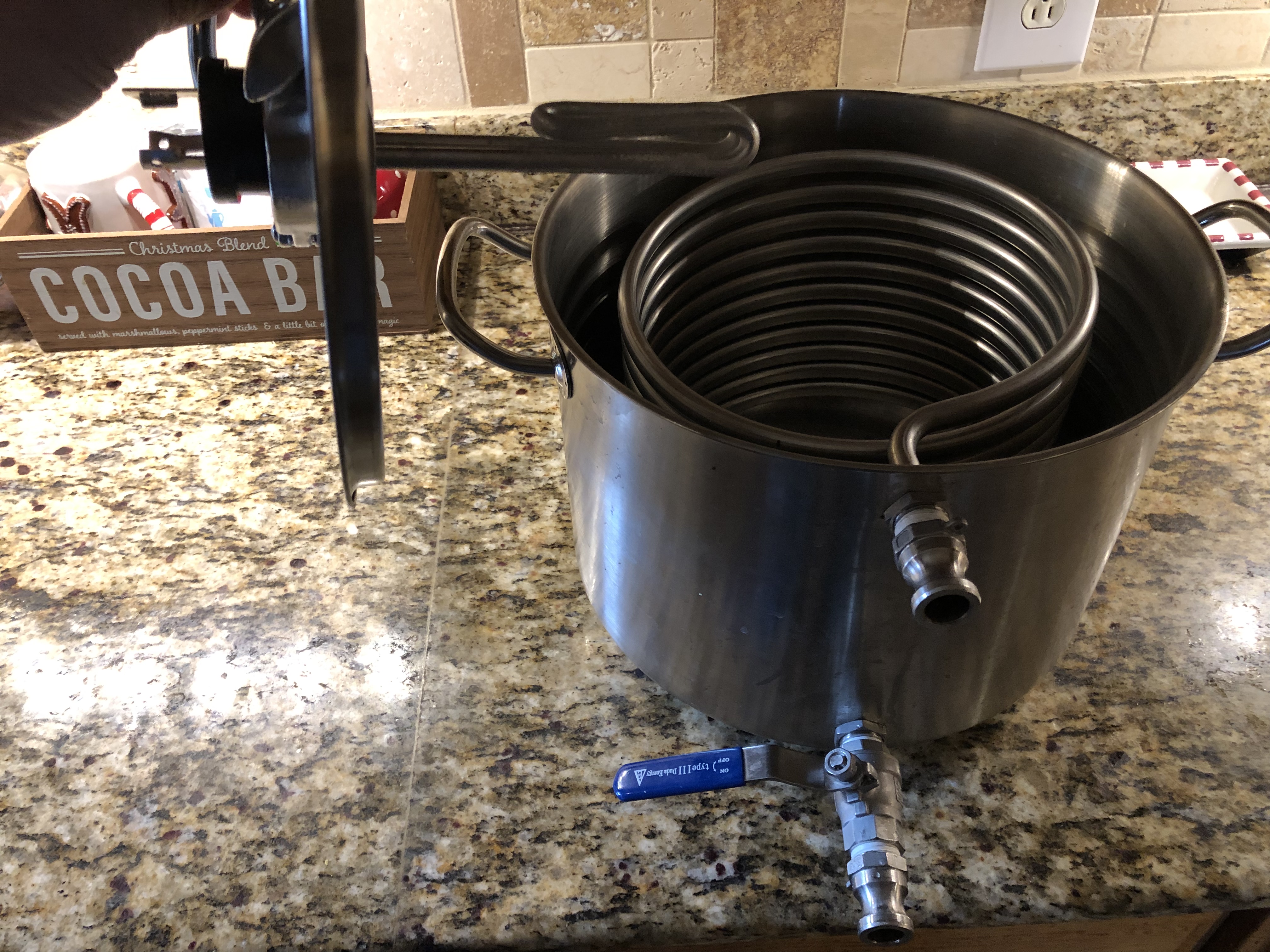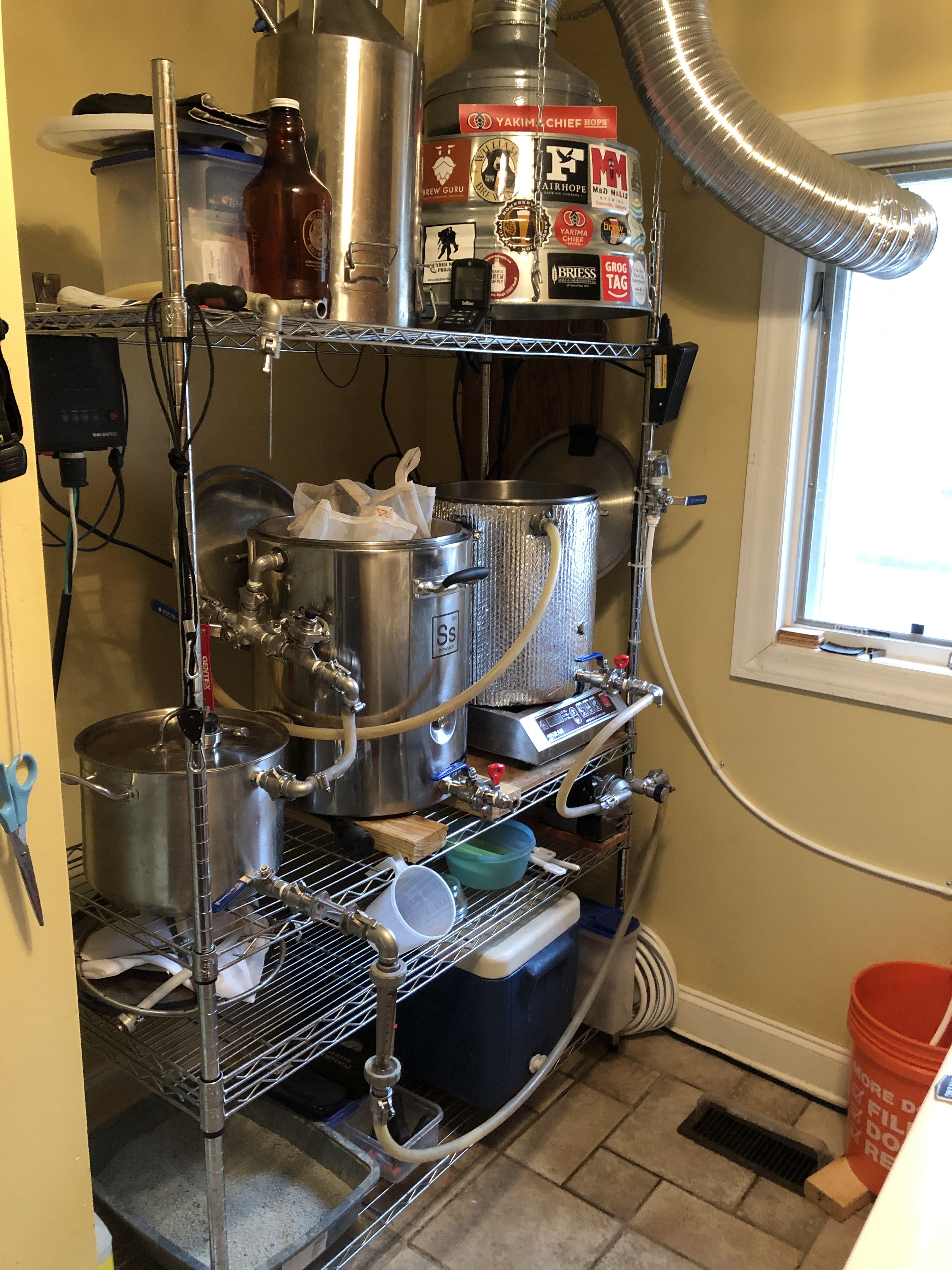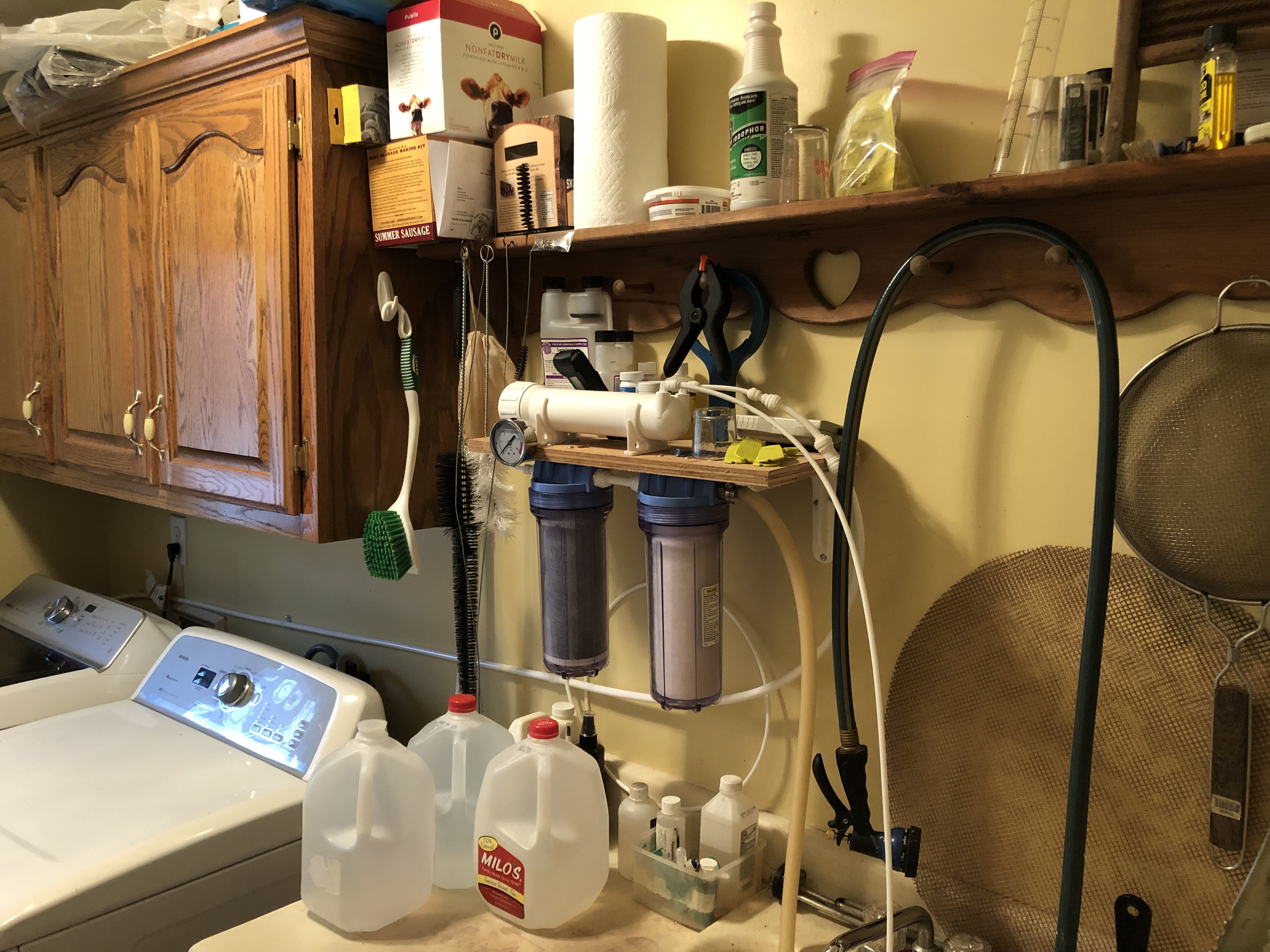nickbarley
Well-Known Member
I've been brewing for 5 years now, using a BIAB Anvil Foundry system, and have had mediocre results with my all-grain brewing. My AG beers always seem to have a subtle harsh, grainy and flabby taste to them. I know this because I have submitted these entries to local and national contests, and gotten feedback from BJCP judges indicating they tasted something "harsh" but could not identify the off-flavor. Even with this "off-flavor" I have had beers score as high as 34/50, which is technically Very Good based on the scoring guidelines.
Despite the judges feedback, I am assuming this harsh and "unclean" taste that I am getting can be attributed to my high alkaline water and mashing process. My pH is often above 5.6, even after lactic acid additions, at the end of the mash.
I tested this theory out by brewing a German Pils primarily with extract and partially mashing with 2-row, munich and acid malts. The result is totally clean, free of that harsh graininess, and a very enjoyable beer. This beer tastes exactly like it should.
I really do not want to primarily brew extract beers, but I can't spend all that time and effort going to the store for R.O water every time I want to brew a pale lager (which is ALL the time).
P.S - Yes, I have my cities water profile, use campden tablets to remove chlorine/chloramine, have Bru'n Water for calculations, use Brewfather for recipes, and have tried R.O water with my AG batches. Trust me - I've tried almost everything except for boiling my tap water and decanting or using slaked lime and decanting.
Any thoughts on how to fix my AG batches?
Despite the judges feedback, I am assuming this harsh and "unclean" taste that I am getting can be attributed to my high alkaline water and mashing process. My pH is often above 5.6, even after lactic acid additions, at the end of the mash.
I tested this theory out by brewing a German Pils primarily with extract and partially mashing with 2-row, munich and acid malts. The result is totally clean, free of that harsh graininess, and a very enjoyable beer. This beer tastes exactly like it should.
I really do not want to primarily brew extract beers, but I can't spend all that time and effort going to the store for R.O water every time I want to brew a pale lager (which is ALL the time).
P.S - Yes, I have my cities water profile, use campden tablets to remove chlorine/chloramine, have Bru'n Water for calculations, use Brewfather for recipes, and have tried R.O water with my AG batches. Trust me - I've tried almost everything except for boiling my tap water and decanting or using slaked lime and decanting.
Any thoughts on how to fix my AG batches?






